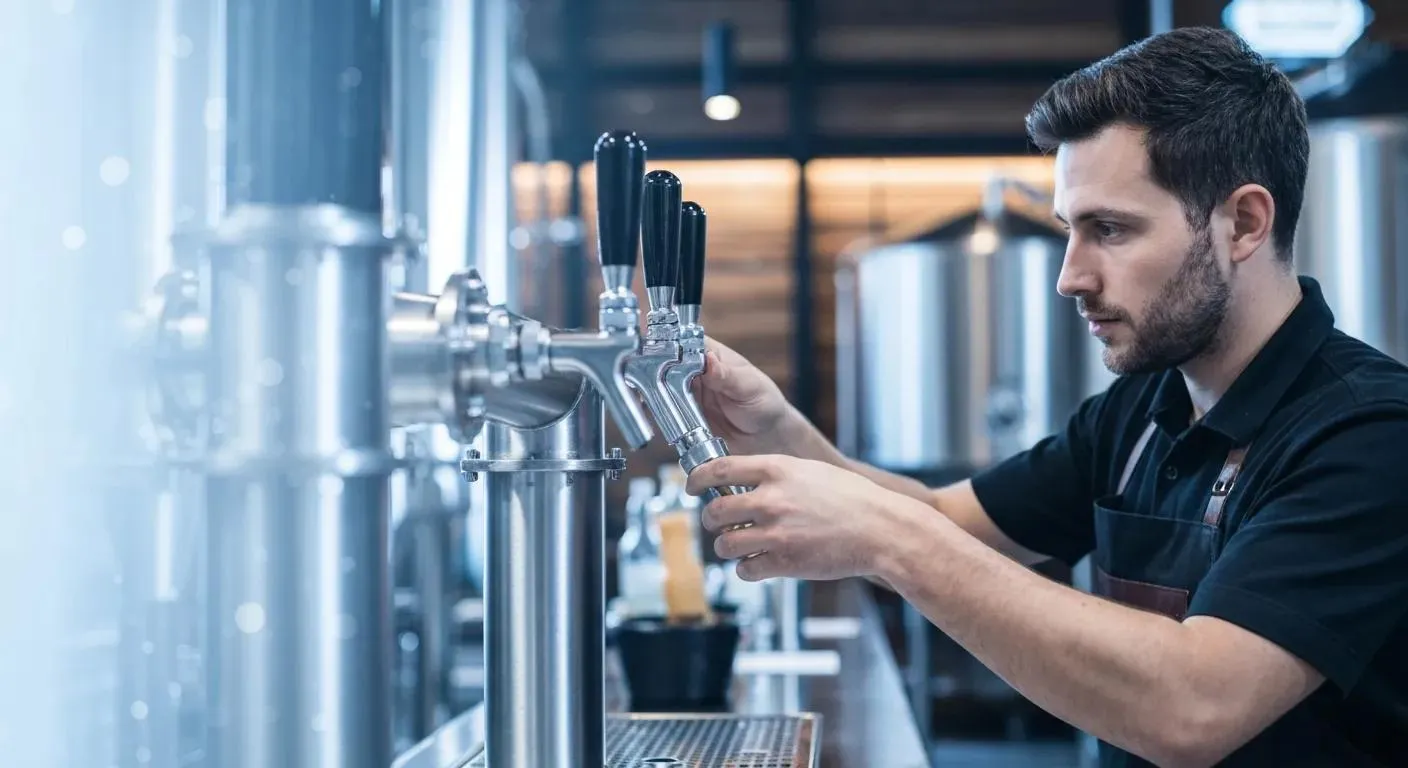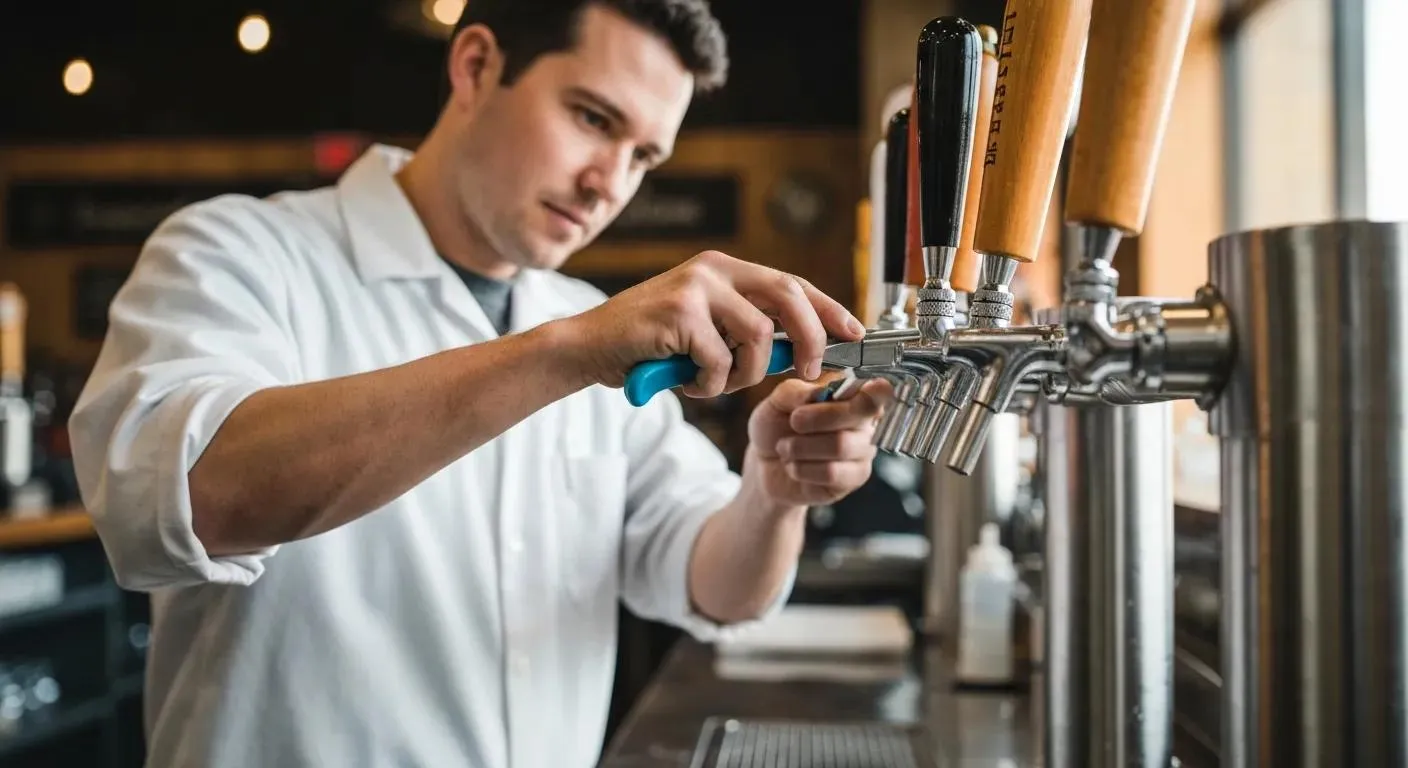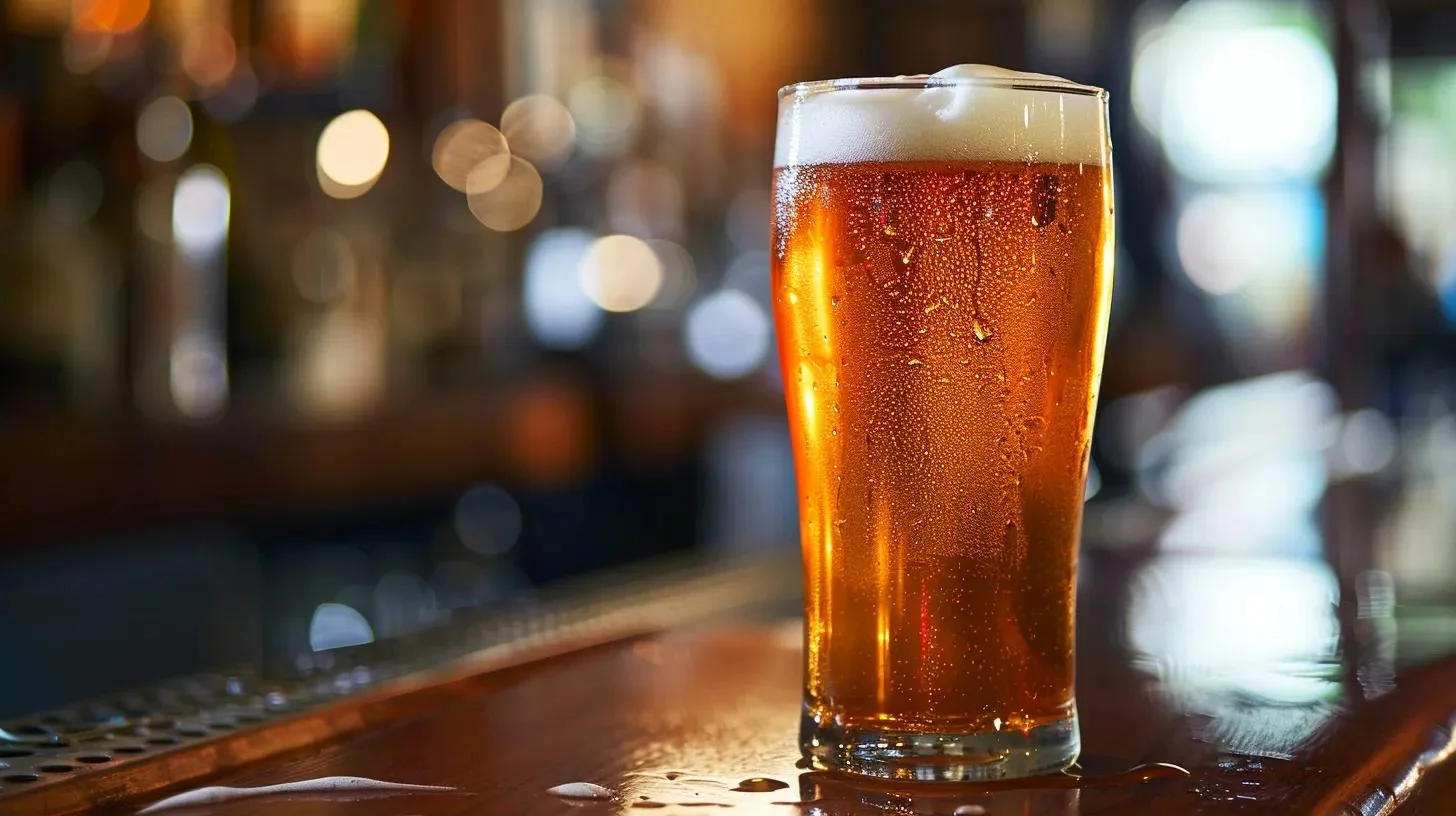Commercial Beer Dispenser Essentials: Choosing the Right Model for Your Business

Serving beer at the perfect temperature and carbonation level is an art. Commercial beer dispensers play a crucial role in ensuring that patrons enjoy their draught beer at its best. These specialized refrigeration units, equipped with taps, are designed for bars, restaurants, and breweries to serve multiple beers efficiently and consistently. The advent of draft beer dispenser commercial kegerators, direct draw dispensers, and club top dispensers cater to various service needs, reinforcing the significance of selecting the right type of beer dispenser that aligns with the volume and nature of service.
For businesses aiming to establish or upgrade their draft beer services, understanding the nuances of installation, maintenance, and troubleshooting is imperative. The process involves more than simply choosing a dispenser. It requires consideration of the kegs, taps, and the potential to expand beverage selections to include wine, cocktails, or alternatives on tap. Moreover, appearance and design play a role in complementing the establishment’s aesthetics, while proper installation ensures the longevity and performance of the dispenser.
Key Takeaways
- Commercial beer dispensers are essential for serving quality draft beer in bars and restaurants.
- Selection and maintenance of dispensers are critical for efficient operation and beverage quality.
- Design choices and the capability to serve various beverages can enhance the overall draft service.
Understanding Beer Dispensers
Selecting the right beer dispenser is vital for any commercial establishment looking to serve draft beer. This section will explore the various types of beer dispensers available and the key components that make up a dispensing system.
Types of Beer Dispensers
Kegerators are one of the most prevalent types of beer dispensers found in commercial settings. They are essentially refrigerated units that house a keg and use CO2 or sometimes nitrogen to push the beer through the system.

On the other hand, direct draw systems are simple, often using a faucet mounted directly on the keg. More complex long-draw systems use stern lines that can transport beer over long distances from the keg to the tap. They often rely on a glycol chilling system to maintain the right temperature and pressure.
The choice between these systems depends largely on the establishment's size, draft beer volume, and layout concerns. It's important for proprietors to choose the best system for their bar as it can have a significant impact on the quality and taste of the draft beer served.
Components of a Beer Dispensing System
A typical beer dispensing system consists of a combination of several key components:
- Tap/Faucet: the point of dispense where beer is poured.
- Keg Coupler: the device that attaches to the keg and allows gas in while letting beer out.
- CO2 or Nitrogen Tanks: necessary for pushing the beer through the system.
- Regulators: used to control the pressure of the gas being sent into the keg.
- Lines: tubes that carry beer from the keg to the tap, and gas from the tanks to the keg.
- Glycol Chiller: used in long-draw systems to keep beer at the perfect temperature from keg to glass.

Every component plays an essential role in ensuring the draft beer system works effectively and maintains the quality of the beer until it reaches the customer's glass. Draft Beer System Ultimate Guide for Retailers provides a deeper understanding of how these components come together to create a cohesive unit. Commercial establishments must ensure each part of the system is regularly maintained and cleaned to keep their beer tasting fresh.
Selecting the Right Beer Dispenser
When outfitting a bar, pub, or restaurant with a beer dispensing system, choosing the right equipment is pivotal to serving the perfect pint. Factors such as the type of dispenser, capacity, and installation environment directly impact functionality and efficiency.
Kegerator vs. Commercial Beer Dispenser
A kegerator is typically a smaller, refrigerated unit designed to dispense beer from a keg and is well-suited for home or small-scale commercial use. Commercial beer dispensers, on the other hand, are larger systems engineered to serve higher volumes of beer in a bar or restaurant setting. They often feature multiple taps and can accommodate several types of kegs, like the common 1/2 barrel or smaller 1/6 barrel, ensuring a variety of beers on tap.
Capacity and Size Considerations
The volume of beer service expected in your establishment is a crucial aspect when determining the ideal size for your beer dispensing system.
Commercial kegerators come in various sizes, with larger units able to house multiple 1/2 barrel kegs, catering to busier venues. For establishments with limited space or lower volume requirements, a compact dispenser handling a 1/6 barrel may suffice. It's essential to balance space availability with service demands.
Indoor Versus Outdoor Options
Decide whether the beer dispenser will be placed indoors or if an outdoor kegerator is necessary.
Outdoor models are built to withstand varying weather conditions and are perfect for pubs or bars with patio spaces. For indoor use, ensure the unit integrates well with your bar's interior layout and that its ventilation requirements are met to avoid overheating.
Installation and Maintenance
Proper installation and maintenance are crucial for the longevity and performance of commercial beer dispensers. These processes ensure cleanliness, efficiency, and the quality dispense of beverages.

Initial Setup of a Beer Dispenser
The initial setup of a beer dispenser involves several critical steps to ensure it operates correctly.
First, one must consider the placement and secure casters if the unit is designed to be mobile. Then, properly mounting the tap tower is next, attaching it firmly to the beer dispenser. It is crucial that the keg is handled with care and connected correctly to prevent leaks and ensure seamless dispensing.
Once the physical setup is complete, the gas line tubing needs to be connected to the CO2 regulator, with the shut-off valve closed for safety.
The CO2 cylinder, which may contain R-600a refrigerant for environmentally friendly units, should be attached and secured with a tool. Lastly, check all connections for a secure fit to prevent any gas leaks.

Daily and Periodic Cleaning
Routine cleaning of a beer dispenser is essential for maintenance and to extend the dispenser's life.
- Daily:
- Surfaces and tap handles should be wiped down to remove residue and maintain a hygienic environment.
- The drip tray needs to be cleaned to prevent odors and buildup.
- Periodically:
- The beer lines require cleaning every two weeks to prevent the buildup of yeast and bacteria, which can affect the beer's flavor.
- Every few months, a thorough cleaning and inspection of the entire system, including checking the lines for any potential issues, is recommended.
Adherence to a strict cleaning schedule helps maintain the taste quality of the beer and also prevents potential health hazards. Using proper cleaning solutions and sanitizers is necessary to ensure clean and uncontaminated lines.
Draft Beer Serving Essentials
Getting the perfect pour of draft beer isn't just about having the right equipment; it's about mastering the intricacies of temperature and pressure settings, and understanding how to balance the draft system effectively.

Temperature and Pressure Settings
The temperature and pressure within a draft beer system are critical for maintaining the beer's quality and ensuring the perfect pour.
The ideal serving temperature for most ales is between 36 to 38 degrees Fahrenheit. The kegerator or refrigeration unit is responsible for maintaining these temperatures.
Pressure settings are equally vital.
Commercial dispensers use a CO2 tank to pressurize the beer lines and maintain carbonation in the beer. The pressure must be set according to the type of beer and its corresponding carbonation level, which generally lies between 12 to 14 PSI (pounds per square inch) for most beers.
Balancing the Draft System
Balancing a draft beer system ensures that beer flows smoothly from the keg to the faucet without excessive foam or carbonation issues.
This balance is achieved by considering the length and inside diameter of beer lines, the pressure from the CO2 tank, and the temperature of the beer.
- Beer lines should be matched with the correct resistance, measured in pounds of resistance per foot, to counter the applied pressure from the CO2 tank.
- Faucets must be regularly cleaned and maintained to prevent blockages that can affect the beer's flow and quality.
Choosing the Best Kegs and Taps
When outfitting a commercial setting with beer dispensing equipment, a precise selection of kegs and tap towers ensures a smooth pouring experience and customer satisfaction.
Understanding the nuances of keg sizes and the differences in tap towers will help one make informed decisions for their establishment.
Selecting Keg Sizes and Types
Keg Types: Commercial kegs typically come in various sizes, notably the 1/2 barrel and 1/6 barrel kegs.

The 1/2 barrel, also known as a full-size keg, holds about 15.5 gallons of beer, equating to approximately 124 pints. This is a popular choice for venues with a high volume of beer sales.
Alternatively, 1/6 barrel kegs, often called sixtels, contain about 5.2 gallons, amounting to roughly 41 pints. They are ideal for a wider selection of brews in establishments where space is a premium or demand for any one beer type is lower.
Keg Dimensions:
- 1/2 barrel: 23¼ inches tall, 16⅛ inches in diameter.
- 1/6 barrel: 23⅜ inches tall, 9¼ inches in diameter.
Keg Couplers: Essential for connecting the keg to the beer line, keg couplers must be compatible with the keg type. Different beers may require different couplers, so it’s crucial to identify the need based on the selected brands of beer.
Differences Between Tap Towers
Tap Towers are a focal point and important functional component of beer dispensing systems.
Single tap towers are suitable for establishments offering a limited selection of drafts, while 2 taps or more can cater to customers with a wider range.
Temperature and Beer Lines: Tap towers need to have a well-maintained cooling system to keep the beer at the optimal temperature from the keg to the faucet.
Insulated beer lines within the tower prevent temperature rise which can affect the taste and quality of beer.
Construction and Aesthetics: Tap towers come in a variety of finishes and should be chosen not only for function but also to complement the bar’s aesthetics.
Stainless steel towers are popular for their durability and ease of cleaning, while brass or copper can offer a traditional pub feel.
Expanding Beverage Selections
In a competitive market, diversifying the beverage menu with a comprehensive range of drinks, from draft beers to craft cocktails, can position establishments as the go-to destination for patrons seeking variety.
Offering a Variety of Draft Beers
Installing a commercial beer dispenser is crucial for establishments looking to offer a spectrum of draft beer options.
Not only does this enable the service of well-known national brands, but it also accommodates an array of craft beer and cidery’s unique offerings.
To ensure freshness and optimal serving conditions, a direct draw beer dispenser is often the choice item for venues desiring a quick and efficient means to serve multiple styles of beer.
- Draft Beer Variety Table:
- National Brands: Classics that appeal to a broad audience.
- Craft Beers: Innovative flavors catering to niche markets.
- Ciders: A sweet alternative, often gluten-free.
Including Wine, Coffee, and Cocktails
Beyond beer, an updated beverage program may include systems for dispensing wine, coffee, and cocktails.
Wine enthusiasts appreciate the availability of different varietals served at the perfect temperature, while coffee on tap, using dispensers designed for cold brew or nitro-infused options, can attract people from a morning or non-alcoholic crowd.
Moreover, cocktail dispensers broaden the offerings even more, allowing for both classic concoctions and innovative mixes, using fresh ingredients and precise blends.
- Additional Beverages:
- Wine: Red, white, and rosé from various regions.
- Coffee: Regular, decaf, cold brew, and nitro coffee.
- Cocktails: Range from signature drinks to seasonal specials.
Design and Appearance
The visual appeal and functional design of commercial beer dispensers are paramount in creating an attractive and time-efficient bar setup.
Operators seek dispensers that not only perform to the highest standards but also complement the establishment’s aesthetic.
Customizing Beer Towers and Faucets
Manufacturers like Perlick and Micromatic are recognized for their ability to customize beer towers and faucets to suit a bar’s specific requirements.
From sleek, minimalist designs to more elaborate and traditional tower styles, the choice of customization allows establishments to mirror their branding through their beer dispensing systems.
The number of taps on a tower can also be tailored, ensuring that they can accommodate the desired range of beer selections.
- Custom Dimensions: Tailored to fit the space and scale of the bar.
- Style Variations: Includes classic, industrial, contemporary, and more.
Material and Finish Choices
The materials used in a commercial beer dispenser influence its durability and appearance.
Stainless steel is a popular choice for its robustness and clean look, and it’s frequently used in both the internal mechanisms and the outer appearance of dispensers.
Finish options vary widely, with black finishes providing a modern, sleek touch that can blend seamlessly with various interior designs.
The finish not only contributes to the dispenser’s aesthetic but also helps protect the system from the wear and tear of daily use.
- Stainless Steel: Preferred for durability and sleek style.
- Color Variations: Including black and other custom colors for visual coordination with the bar theme.
- Finish Durability: Ensures longevity even under constant use.
Troubleshooting and Repairs
In any commercial setting, maintaining the proper functioning of beer dispensers is critical for operation. This section provides practical guidance on identifying and rectifying the most common issues that may be encountered.
Common Issues with Draft Beer Dispensers
When troubleshooting draft beer dispensers, several issues may arise.
The faucet is a common culprit, as it can become clogged or leaky, disrupting the flow of beer.
Symptoms include a sporadic stream or an inconsistent pour, contributing to excessive frothiness. Regular inspection and cleaning are necessary to prevent build-up that can affect performance.
Drip trays and filters should be checked for buildup of residue which can encourage bacterial growth or rust formation.
Stainless steel drip trays are preferred due to their resistance to rust, but they still require frequent cleaning.
To maintain a beer dispenser’s integrity, it is crucial to prevent and address rust formation.
Rust can not only compromise the structural integrity of metal components but also affect the taste of the beer. Upon detection, rusted parts should be replaced promptly to avoid contamination.
Addressing Problems with Keg Couplers
The keg coupler is an integral part of a draft beer system, acting as the linking mechanism between the keg and the beer line.
It’s essential for the coupler to have a secure and airtight seal; otherwise, it can be responsible for frothy beer or cause the system to lose pressure. Regular inspection and replacement of worn seals can remedy this issue.
If a keg coupler is malfunctioning, it could likely be due to improper handling or normal wear and tear.
It’s important to follow the manufacturer’s guidelines for connecting and disconnecting the coupler to minimize damage. Replacing faulty parts or the entire coupler may sometimes be necessary to ensure a seamless flow of beer from the keg to the glass.
Advancing Beverage Service
In an industry where customer satisfaction is paramount, commercial beer dispensers are revolutionizing the way beverages are served.
Establishments are now able to offer a wider variety, maintain quality, and manage high volumes efficiently.
Enhancing the Customer Experience
Customers and guests frequenting bars and restaurants expect not only quality but also a memorable service experience.
The latest direct-draw beer dispensers are designed to serve ice-cold beer with the perfect foam head.
These units are compact, ensuring that even smaller venues can provide a premium pouring experience. For instance, the reinforcement in the Perlick direct draw dispensers ensures durability in the busiest of settings.
Upgrading for Events and Volume Service
When it comes to events or high-traffic pubs, the ability to manage large volumes without sacrificing the quality of the beer is key.
Some commercial beer dispensers are specifically built to handle such demands. They feature multiple taps and large keg capacities.
Summary
Commercial beer dispensers, also known as kegerators, are essential equipment for bars, pubs, and restaurants aiming to serve draft beer. They come in various configurations. For example, you can find full-sized freestanding units and more compact designs, all tailored to meet the needs of commercial venues.
Key Features:
- Size & Capacity: Units can range from models designed to hold a single keg to larger ones that can accommodate multiple kegs.
- Indoor/Outdoor Compatibility: Some dispensers are weatherproof for outdoor use and can withstand varying environmental conditions.
- Reliability & Standards: Quality commercial kegerators are built for durability and meet various standards. For example, they are ETL-S listed to NSF-7 and UL-471 for commercial applications.
- Environmental Considerations: Many modern dispensers are 100% CFC-free, ensuring they don't harm the ozone layer.
Popular Types:
- Single Tap Kegerators: Ideal for venues with a limited selection of draft beers.
- Multiple Tap Units: These allow for serving various beers simultaneously. Some models can include features like Quadruple Tap Towers.
Prices and specific features, like club tops and forced air refrigeration systems, can vary greatly. Dispensers with forced air systems ensure consistent cooling and can maintain optimal beer temperature even in high-demand settings.
For any questions regarding these commercial-grade kegerators, or if you need help installing one please reach out to us at Renny's Draft Solutions. We would be more than happy to assist you.
Cheers!



